An Idiot's Guide To The Mitsubishi Lancer Evolution: History, Generations, And Our Rankings
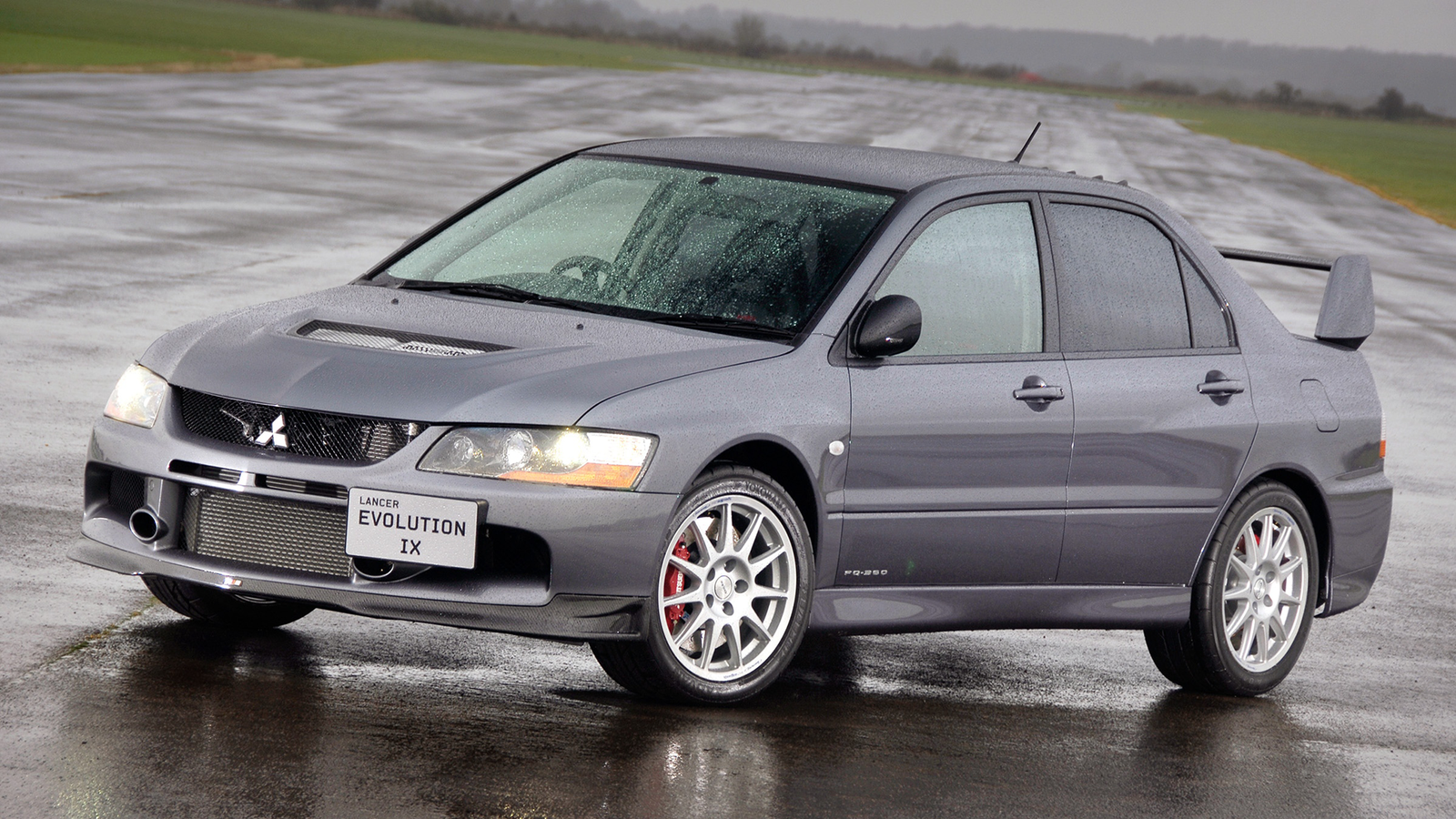
It’s actually surprising that it took until 1992 for the Mitsubishi Lancer Evolution to appear. Mitsubishi had been messing around with high-tech rally machines for decades, but the Evo legend began with a trickle before it became the flood of gravel-spitting excellence that we know and love today. Over the next couple of decades the Evo, er, evolved, with 10 versions created, nailing themselves to the walls of motoring’s hall of fame.
Let’s look back at how the icon of the Evo grew, and then we’ll tell you which versions we think are the best.
1992 Mitsubishi Lancer Evolution
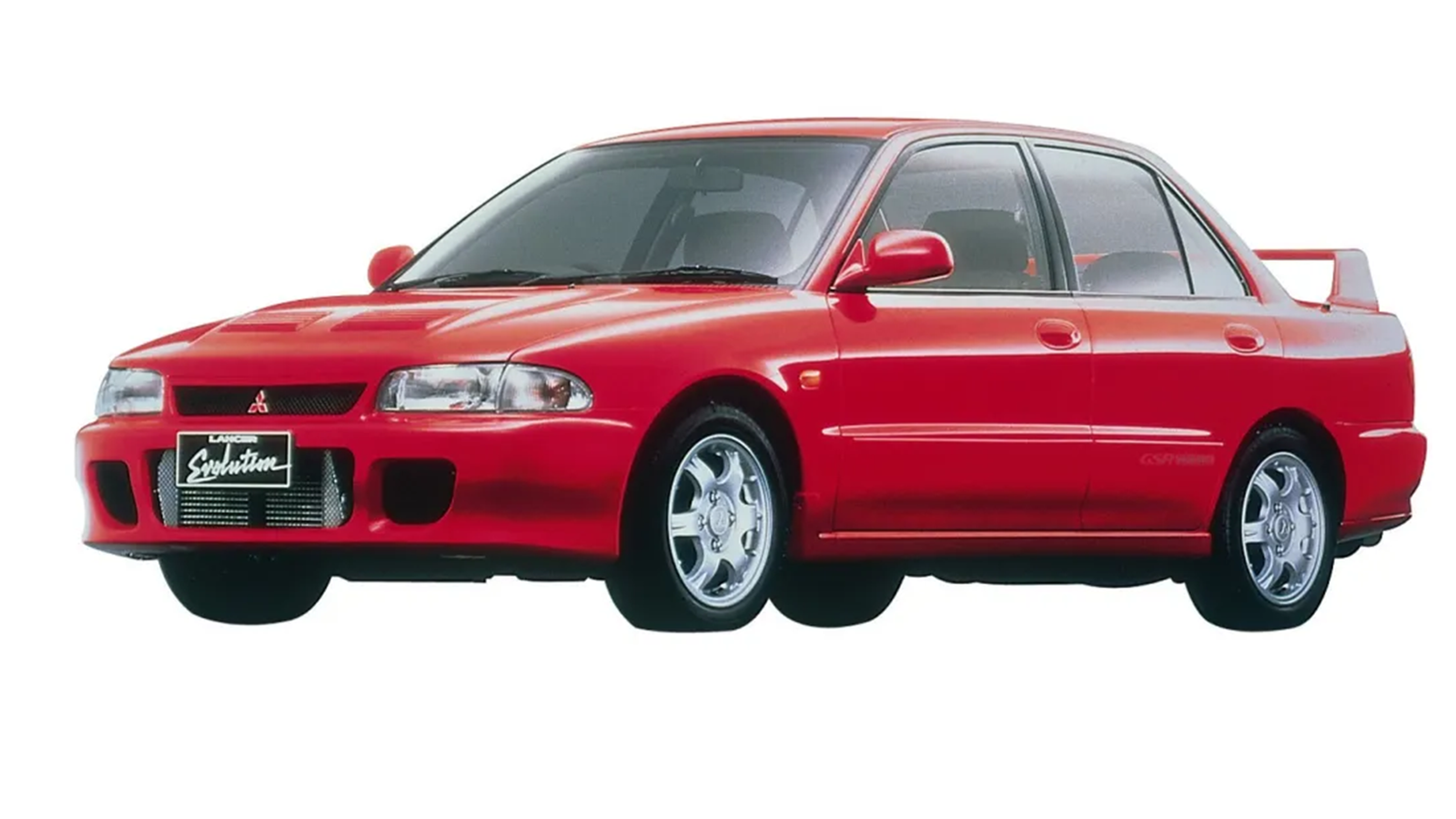
The Mitsubishi Lancer was first introduced in the early 70s and was immediately put to work in motorsport. The Lancer 1600GSR took the top spot at the Safari Rally in 1974, a year after it was released, and went on to win plenty more titles at various events. The second-generation car carried on that tradition when it was introduced in 1979, and Mitsubishi continued its rally success through the 1980s, with a Paris-Dakar win from the Pajero in 1985.
But somehow that Lancer rallying heritage and the tech discovered from Mitsubishi’s wider motorsport expertise hadn’t come together. A road-going version of the Galant VR-4, which competed in the World Rally Championship, made an appearance in the mid-1980s, but it wasn’t until the early ‘90s that Mitsubishi decided to switch to a smaller car for its rally efforts, to better compete on rally stages against the mighty Lancia Delta Integrale.
By this time, the fifth-generation Lancer was on the market, and it was this that formed the basis of the new car – the Mitsubishi Lancer Evolution. The suffix on the name showed that it was a new version of the existing Lancer GSR, upgraded to comply with racing homologation rules.
It was quite the machine. The Galant’s 2.0-litre 4G63T engine with 244bhp was transplanted into the Lancer and mated to a five-speed manual gearbox, with rally-bred four-wheel-drive. Although only 5000 were made (the minimum number needed to homologate them into competition), and only sold in Japan, word soon spread – the first Mitsubishi Lancer Evolution snaked across the world via grey importers, and a legend was born.
1994 Mitsubishi Lancer Evolution II
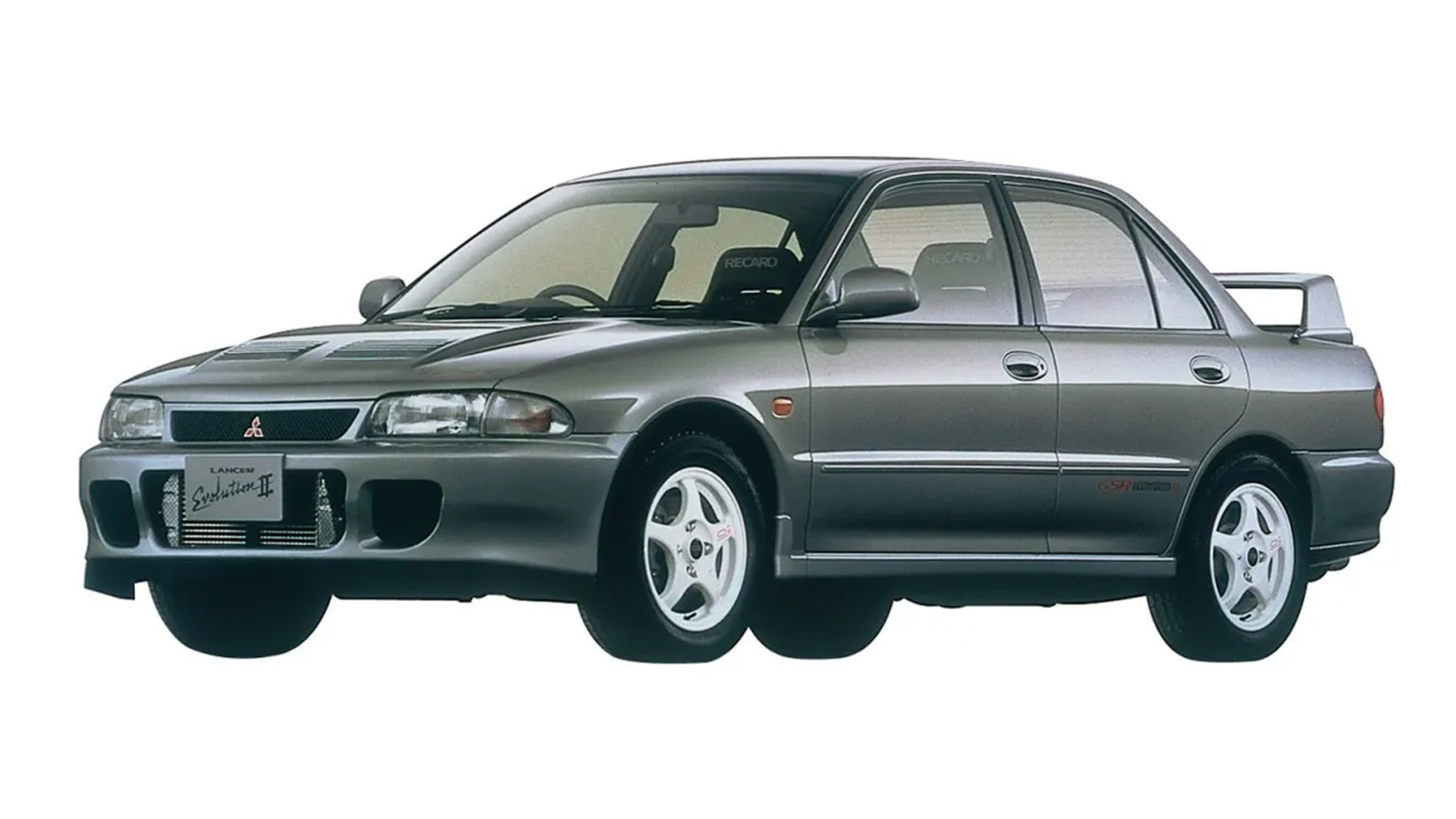
Less than two years after the first Evo rolled off the production line, it was given an overhaul. The Mitsubishi Lancer Evolution II was… well, essentially the same car, but with some choice tweaks, using lessons learned from Mitsubishi’s rallying exploits. The wheelbase was increased by 10mm and the track was widened front and back to cope with larger wheels, with which came increased grip. The same engine lurked under the bonnet but was tweaked to produce 252bhp using a revised exhaust system and increased boost.
The new car was stiffer, too, and had a beefier gearbox and clutch. Once again, 5000 Evo IIs were made, and they sold out within months. And success in the showrooms was mirrored in motorsport, as the Evo took its first WRC victory at the 1995 Rally Sweden in the hands of Kenneth Eriksson. Another win in Australia followed, which coincided nicely with the next evolution of the… er, Evolution.
1995 Mitsubishi Lancer Evolution III
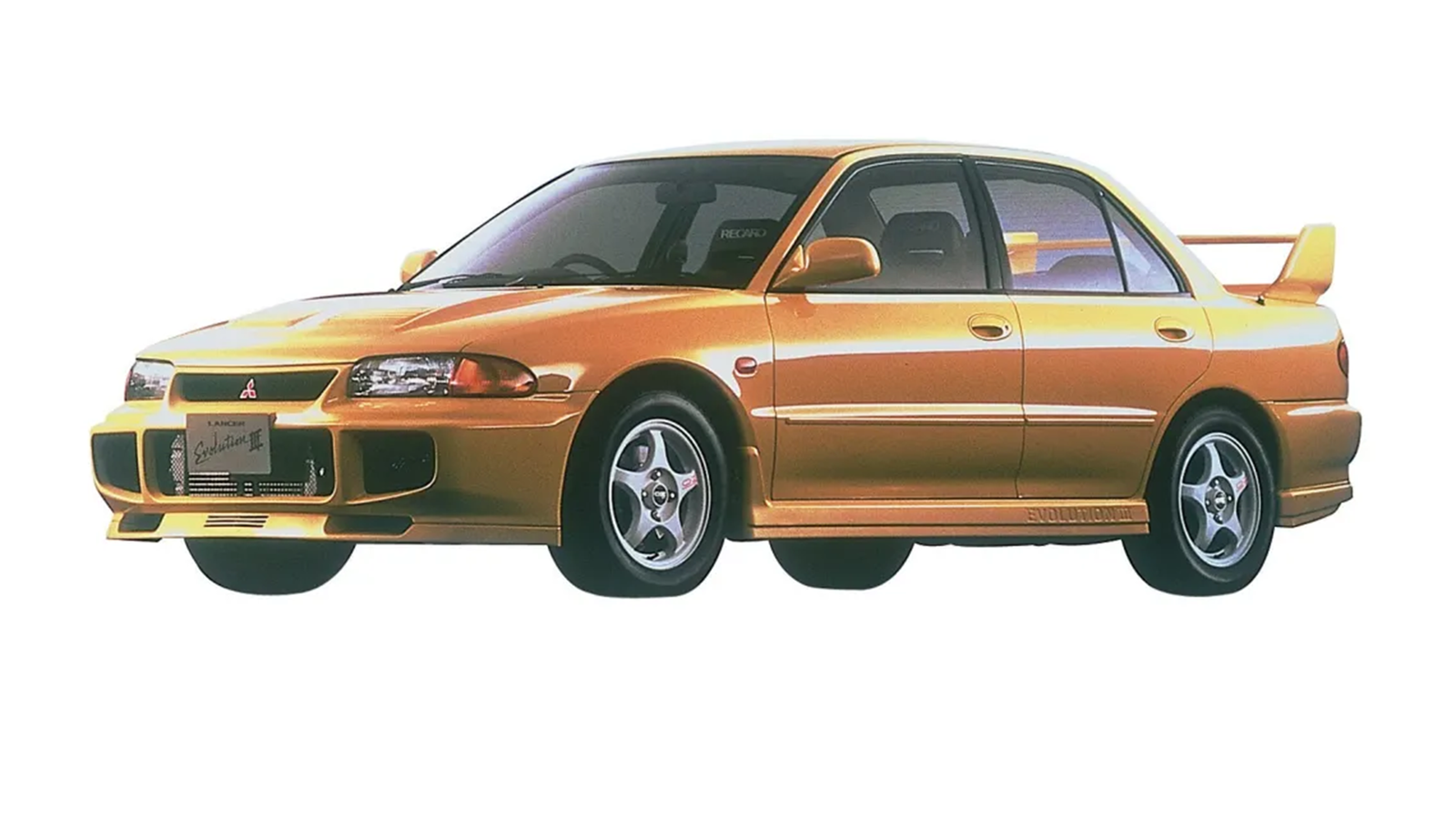
Introduced in February 1995, the third Evo was still the same car underneath – the fifth-generation Lancer – but, visually, the styling was beefed up with extra channelling from the bumper to the brakes, rad and intercooler. More goodies were added to the engine, including a new turbo and exhaust system, which hiked power up to 266bhp, and a chonky wing on the back aided downforce.
Sales continued to fly, and success on the rally stages improved too – the Evo III took the 1996 World Rally Championship title through Tommi Makinen, who won five of the year’s nine events. Then he won it again in 1997. And in 1998. And in 1999. But we’re getting ahead of ourselves…
1996 Mitsubishi Lancer Evolution IV
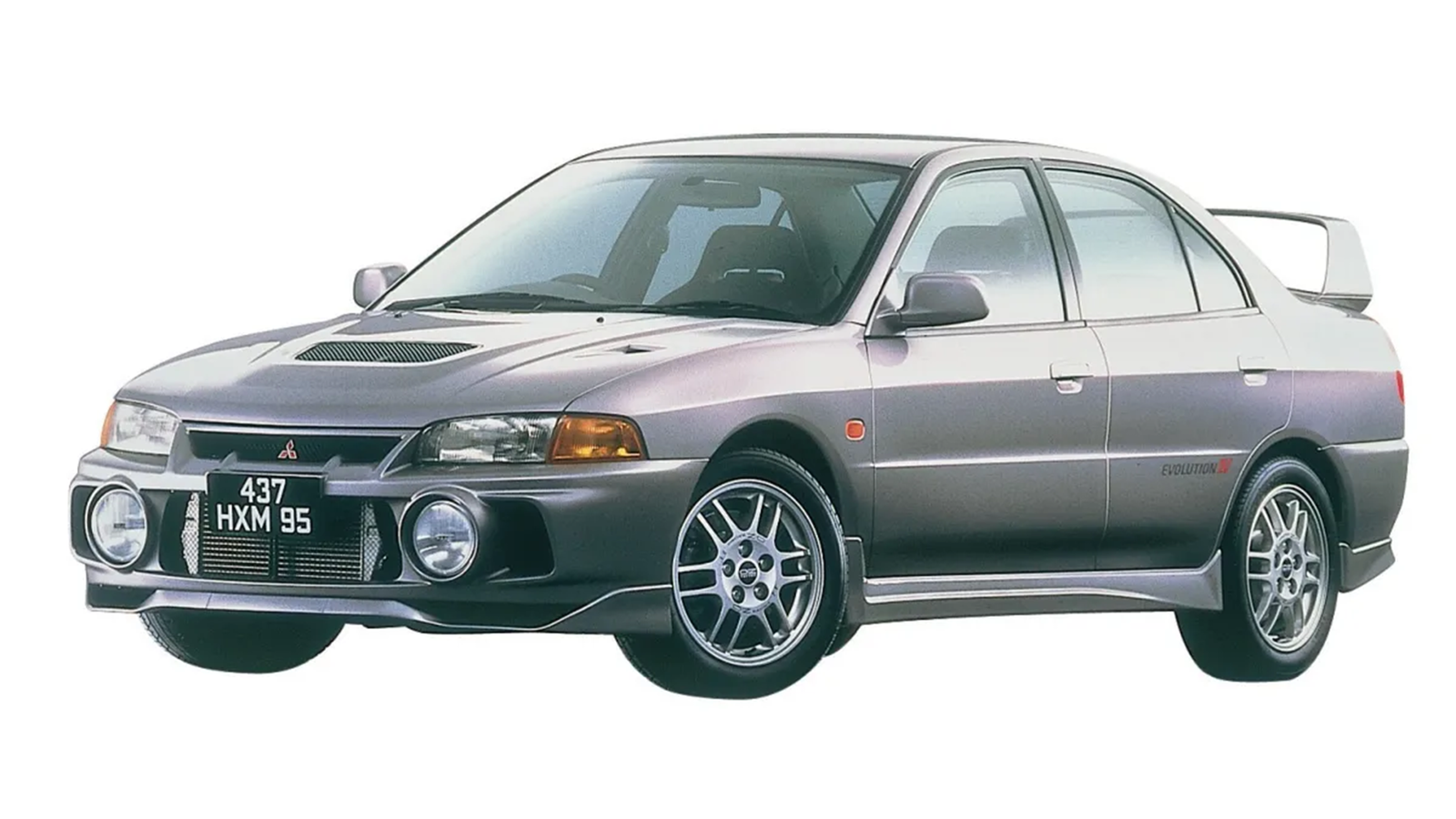
While the Evo had matured gradually over several years, the arrival of the Evo IV in mid-1996 was a much bigger leap forward. For a start, it was based on a different platform, that of the sixth-generation Lancer.
As well as the new underpinnings, the Evo IV had its engine swivelled by 180 degrees, improving the overall weight balance. The engine was given an upgrade once again, with a new turbo and exhaust system that boosted power to 276bhp.
For the first time, the Evo featured (on top-spec GSR models) Active Yaw Control, which used sensors to detect the car’s movement and distribute torque to the left or right side of the car depending on where it was needed, improving traction through and out of corners. The end result was a car that was undoubtedly more capable, although some bemoaned the fact that the extra layer of control meant it wasn’t quite as bonkers as earlier cars.
1998 Mitsubishi Lancer Evolution V
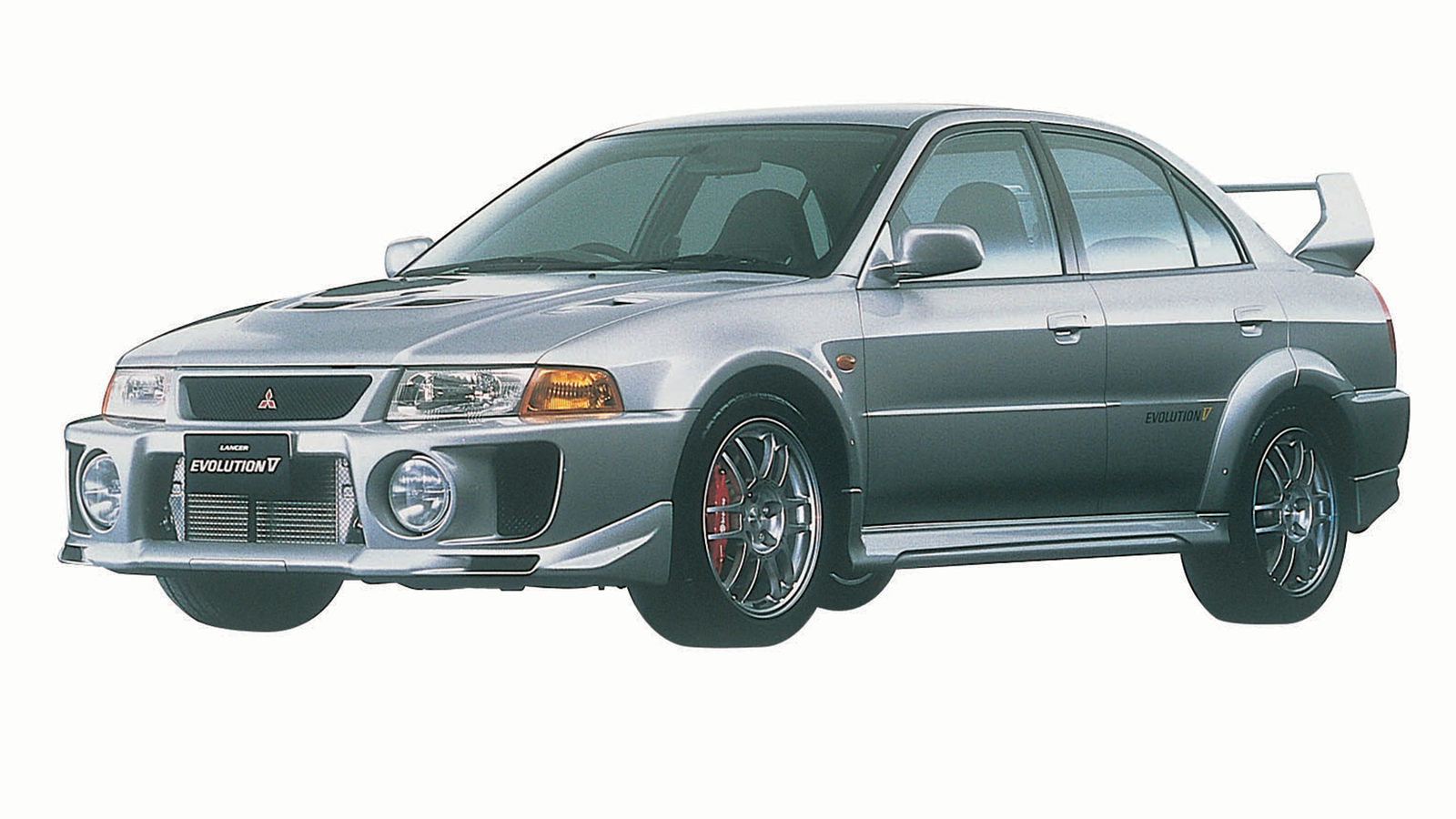
The same sixth-generation Lancer base was retained for the Evo V, which appeared at the start of 1998. But there were changes nonetheless, chiefly to beef up the car to match Group A rally regulations. Thus, the car had a wider track and larger OZ wheels to accommodate bigger Brembo brakes, as well as more aggressive styling and revised, adjustable aero elements. Once again a new turbocharger breathed extra life into the 4G63T engine, boosting torque but keeping the power the same (Japanese car manufacturers had an agreement at the time to not go mad with horsepower wars).
1999 Mitsubishi Lancer Evolution VI
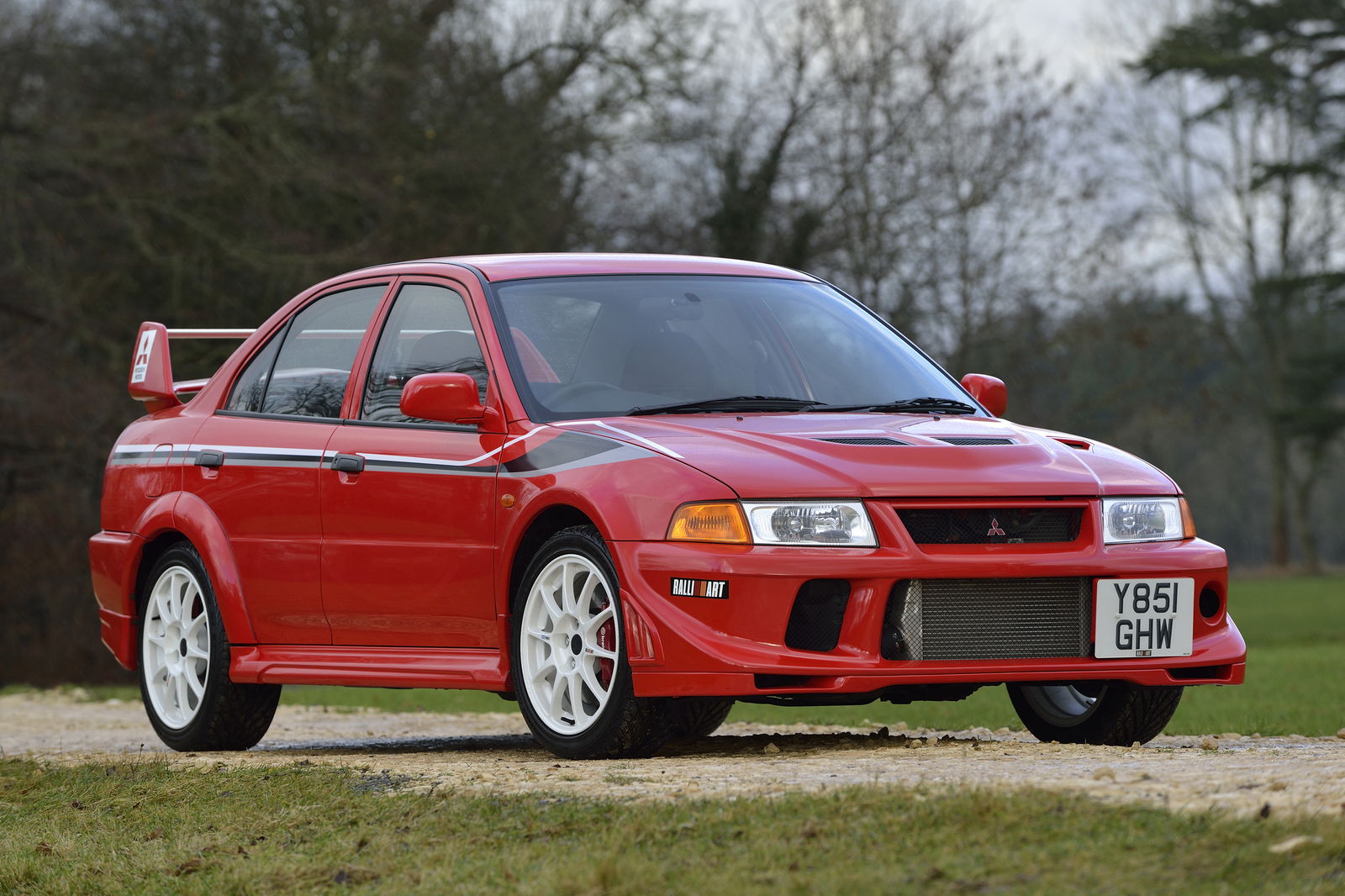
Only a year after the Evo 5, the Evo 6 came swinging onto the scene with changes that aimed to tackle issues of overheating and engine life. Thus a larger intercooler was wedged under a new, gaping front bumper, and the engine internals were reinforced, with power and torque unchanged. This is, to the hardcore purists, the finest incarnation of the Evo, and the last version with a direct link to motorsport. It was also released at the peak of the Mitsubishi vs Subaru debate and offered a more-than-robust challenger to the mighty Impreza.
Late in the year a special Tommi Makinen Edition was released, named after the four-time Evo-wielding WRC champion and with a few choice upgrades that have made it one of the most desirable Evos ever made. Ironically, it came in just as Makinen’s winning streak came to an end, with Peugeot taking the 2000 title through Marcus Gronholm.
2001 Mitsubishi Lancer Evolution VII
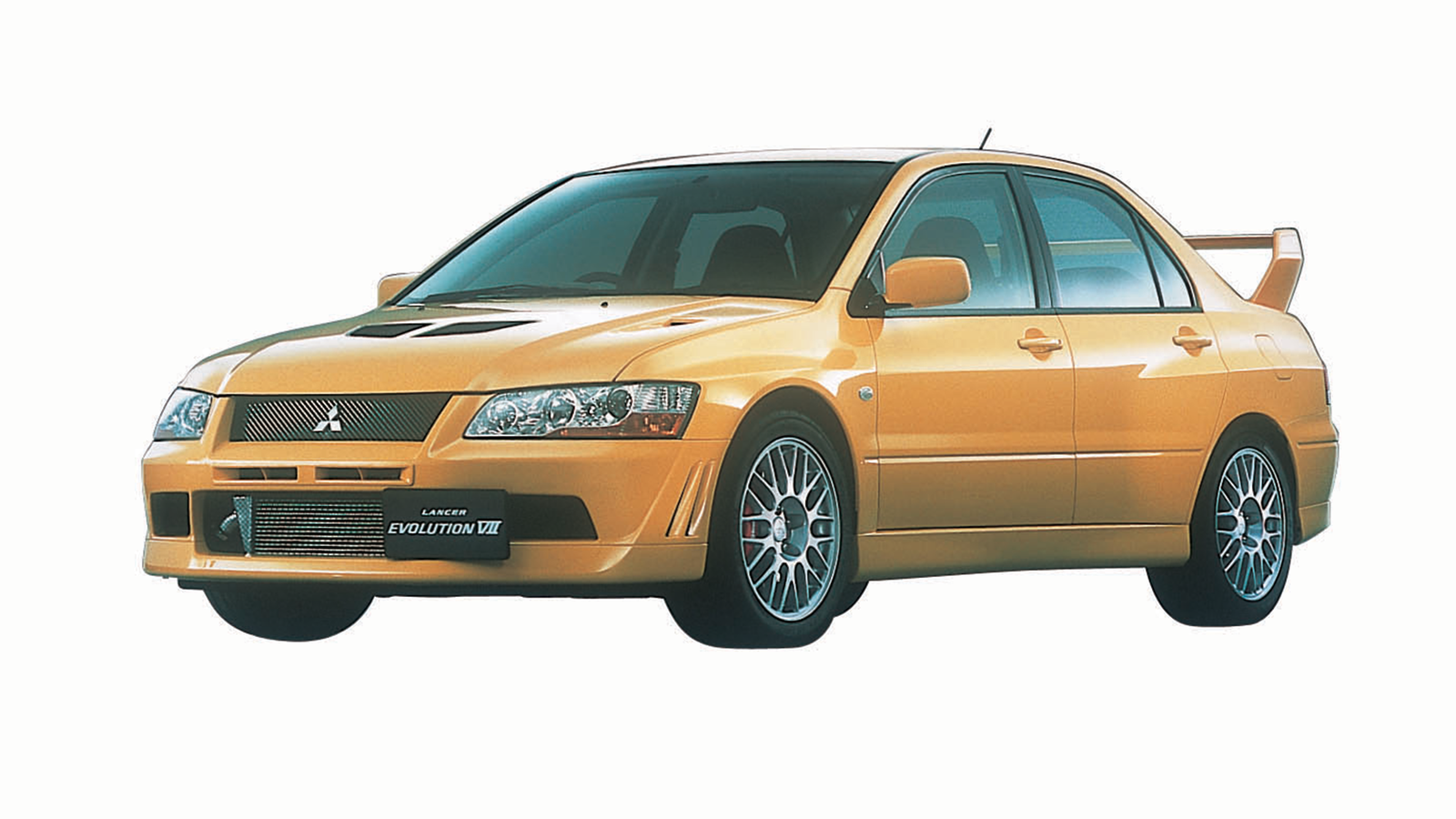
The WRC rules changed in 2001, with the result that the rally-going Evo no longer needed to be homologated. In theory, this meant that there didn’t need to be a road-going Evo anymore, but the road car had developed an identity of its own, and Mitsubishi realised they would have been made to drop it. The new Evo VII, then, was based on a larger, heavier seventh-generation Lancer platform, and had a load of new tech thrown at it.
The headline was the arrival of Mitsubishi’s Active Centre Differential, which when paired with Active Yaw Control formed what the company called the All Wheel Control system, featuring Gravel, Snow and Tarmac modes for different types of driving. It basically tied all the systems together, with the result that hustling the Evo VII felt very much like it was still a rally car.
Power from the factory again stayed at 276bhp, although the torque was slightly up. However, Ralliart – the UK importer of the Evo VII – built several UK-specific models that upped the power and the madness. These included the Extreme with 339bhp and the bonkers RS Sprint, which had 320bhp and a mega-close gear setup with a regular front diff and locking rear diff in place of the stock AWC system. Then there was the FQ-300, with 305bhp. The letters in the name? Officially they were just letters, but numerous sources confirmed that they stood for “F**king Quick*.
The Evo VII found further fame as one of the halo cars from 2 Fast 2 Furious, released in 2003. As was…
2003 Mitsubishi Lancer Evolution VIII
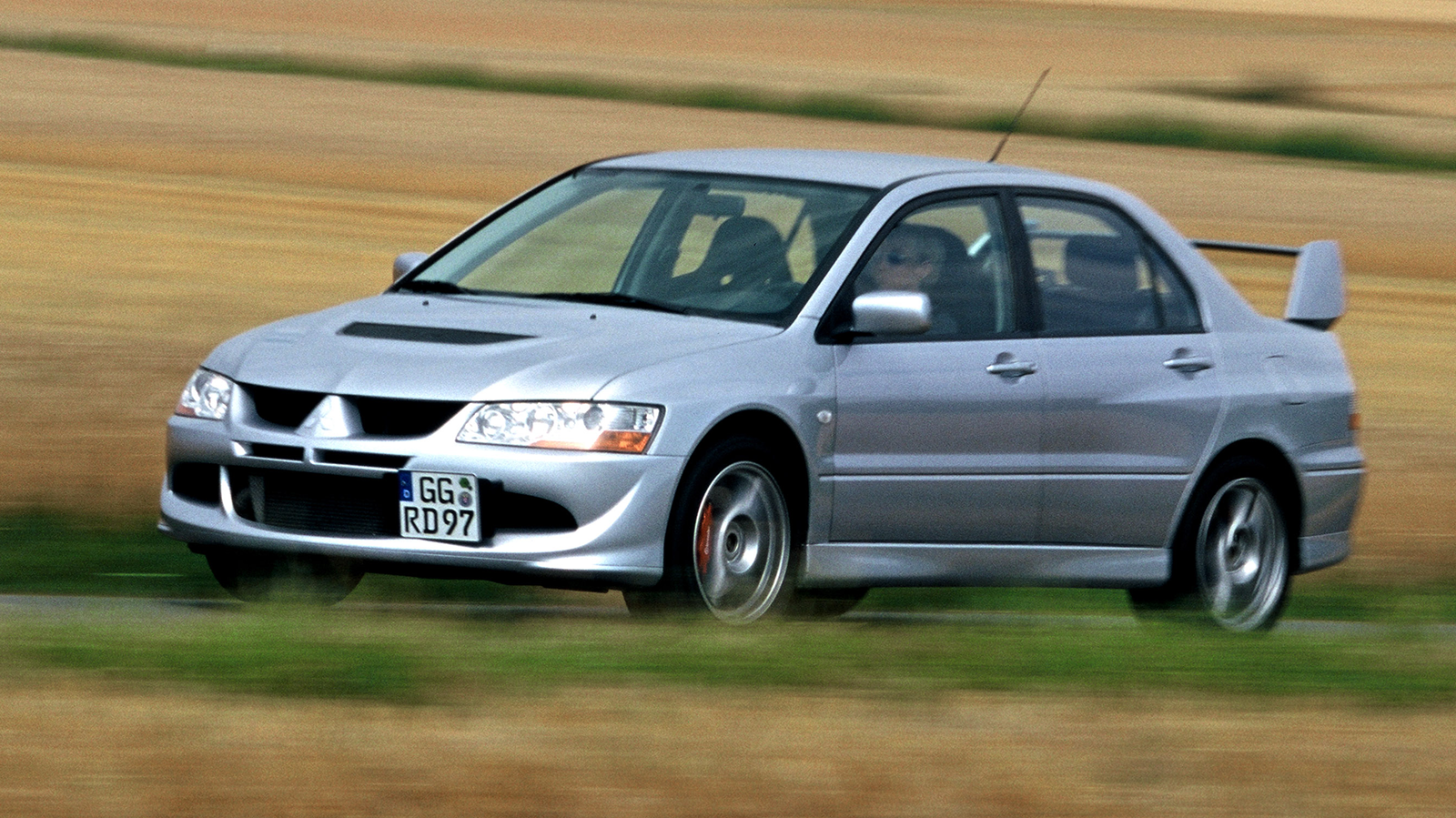
The eighth incarnation of the Mitsubishi Evo brought upgrades to the VII, although exactly what those upgrades were depended on the country in which it was sold. The car rode on Enkei wheels and featured Bilstein suspension, as well as upgraded Active Yaw Control, now called Super Active Yaw Control.
Power in Japan once again stayed at 276bhp, but in the UK it was once again upped by Ralliart – no surprise, seeing as the beefed-up Evos made up the vast majority of British sales. A full range of FQ cars were made available, with extra PS thanks to features like increased boost, a supplementary ECU and replacement exhausts. The standard Evo 8 was available in FQ-300 and FQ-330 forms, while the arrival of the Mitsubishi Racing (MR) Evo, with its lightweight roof, uprated shocks and BBS alloys, formed the basis for another FQ-300, the FQ-320 with 326bhp and the FQ-340 with 340bhp.
Then in 2004, the FQ-400 appeared with 405bhp, a 0-60mph time of just 3.8 seconds and a reputation for being batpoop bonkers. It was massively pricey for the time and was crammed full of upgrades, including basically a new engine, with an HKS block, bolts and rods, Omega forged pistons, custom Garrett turbo and manifold and a Motec engine management system, among other goodies.
Perhaps surprisingly, a less powerful version was also introduced. The Evo VIII 260 had 265bhp and didn’t look quite as crazy, but it kept much of what made the car so fun, including the brake and the clever active tech. At the time, it was just £22,999, which was very cheap for the performance, even then. Sadly, not many were sold, which means they’re as rare as anything now, and consequently not very affordable.
2005 Mitsubishi Lancer Evolution IX
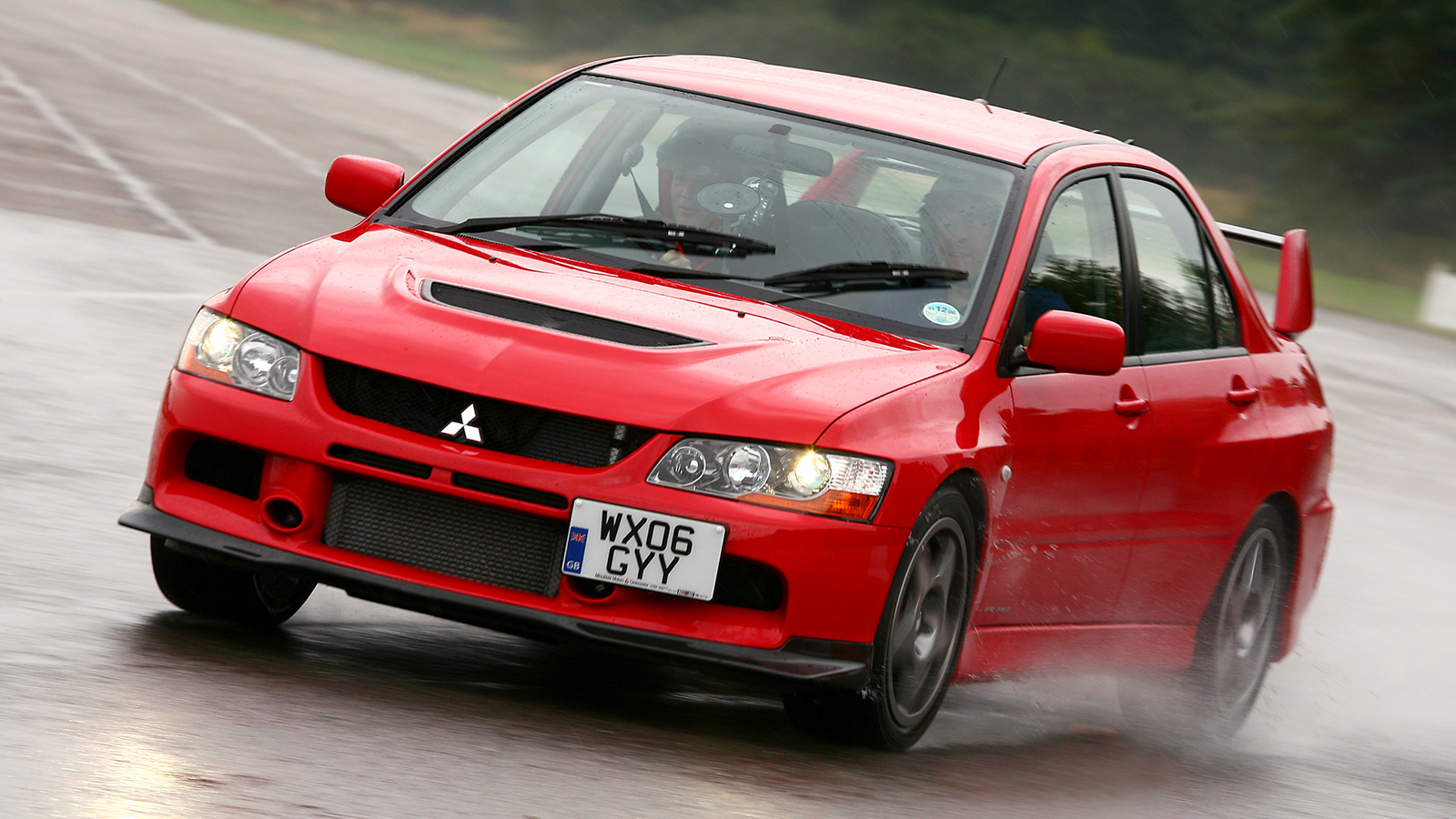
The ninth generation Evo used the same chassis as its predecessor and, in fact, many of the same other bits too, although the engine featured MIVEC variable valve timing for the first time, a revised turbo and uprated piston rings. Cars arriving on British shores were sold as the 305bhp FQ-300, the FQ-320 with 236bhp or the 340bhp FQ-340. Later, the FQ-360 arrived with 366bhp courtesy of its HKS exhaust, uprated fuel pump and an EvoTeK remap.
The arrival of the MR version prompted the Evo IX’s swansong in the UK – a new MR FQ-360. It sported stylish Speedline Turini alloys and a lowered ride height courtesy of Eibach springs
The Evo 9 was also available as an estate, called the Evo 9 Wagon. Sadly it was only sold in Japan.
2007 Mitsubishi Lancer Evolution X
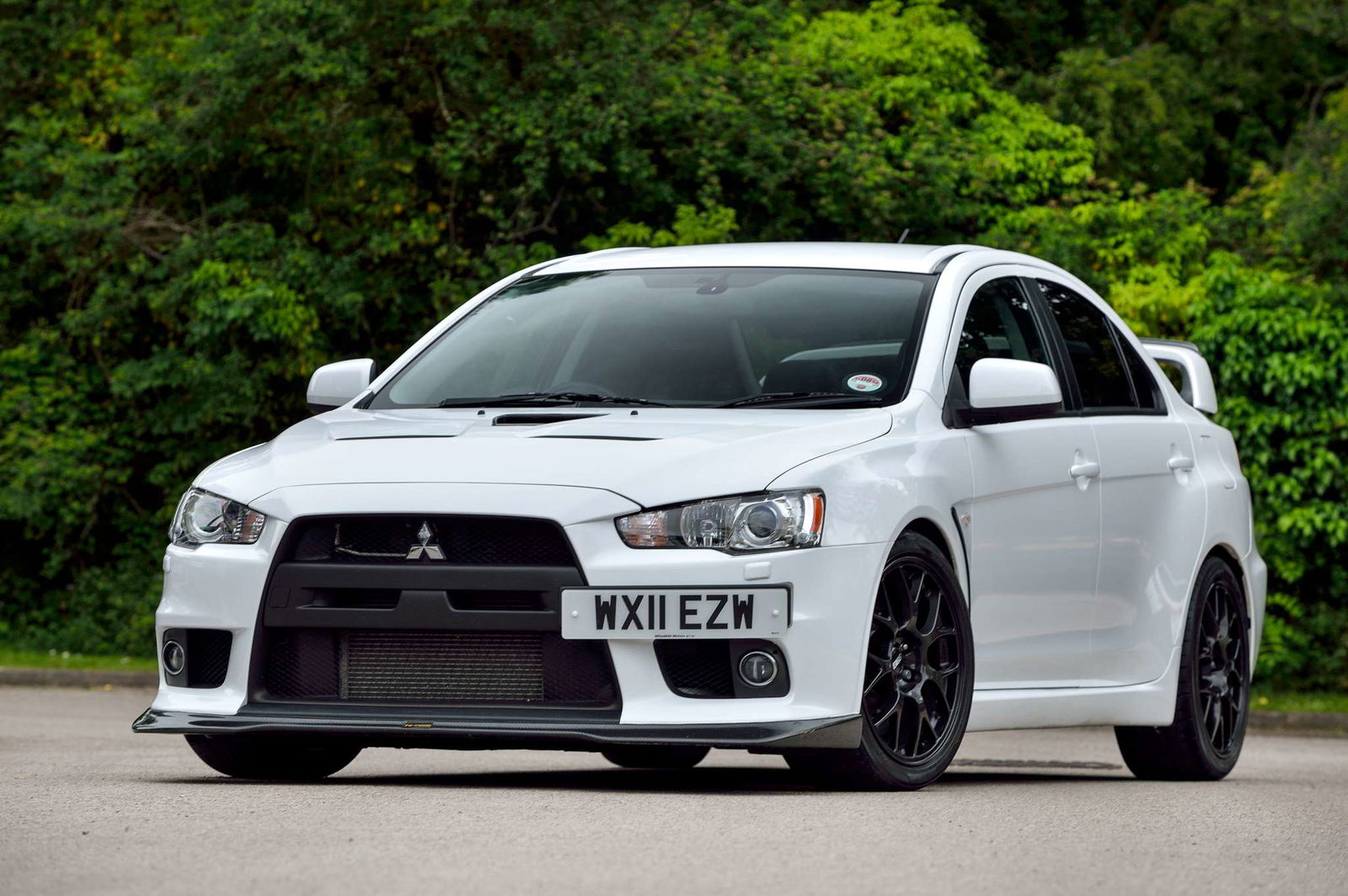
All good things must come to an end. And in 2007, the final chapter in the Mitsubishi Evo saga was written.
The Evo 10 was unveiled and this time was based on the eighth-generation Lancer. Perhaps controversially, the 4G63T engine that had seen service in Evos I through IX was ditched, in favour of the new lighter alu-block 4B11T unit. The automatic gearbox took centre stage, with a six-speed twin-clutch unit in most of the Evos sold. A few five-speed manual models were sold on UK shores, but they’re very rare.
All the usual diffs and anti-yaw tech were present and correct, and the result was… well, something still exceedingly capable, but slightly more grown-up. It was better in many ways, and more refined, but somehow felt less exciting as a result.
The Evo X went on sale in the UK at the start of 2008 and, as was now tradition, came in a variety of FQ guises, starting with the FQ-300 and moving up to the 324bhp FQ-330
The FQ-360 had 354bhp thanks to the traditional air filter, ECO and fuel pump upgrades, and it was one of the few manual models – the extra power was too much for the auto to cope with.
An FQ-400 model was launched in 2009, with a massive price tag (£50k, not far off the price of a Nissan GT-R at the time) and a fragile nature – it needed servicing every 5000 miles. Still, 403bhp, lashings of carbon fibre, a wider track and lower suspension don’t come cheap. And it did at least come close to matching the appeal of earlier Evos.
Then in 2014, the final hurrah – the FQ-440 MR. It was another £50k car new and had 440bhp thanks to upgraded everything (turbo, injectors, intake, exhaust, intercooler, brakes, wheels…). The automatic gearbox was finally strong enough to take the heat, so flappy paddles were installed behind the steering wheel.
In 2016, the plug was finally pulled, the Evo was consigned to history and Mitsubishi went all boring, with few products to get very excited about. But it’s a history that will have many students for years to come. And remember, ‘tis better to have loved and lost than never loved at all.
Ranking the Mitsubishi Evos
That’s the history, then. But after all that, which Mitsubishi Evo is the best? It’s an impossible question to answer really, because even the lowliest Evo has been fettled and modified by enthusiasts and made hilarious. But looking purely at the stock cars, here’s what we reckon, and why. Let the arguments begin.
10: Mitsubishi Evo I
The genesis of a great idea, but not fully realised at this point.
9: Mitsubishi Evo II
Heading in the right direction, but still off the mark.
8: Mitsubishi Evo III
Like the first two, but a bit better.
7: Mitsubishi Evo IV
The arrival of Active Yaw Control improves the driving experience considerably, although the weight hike over the III takes the edge off.
6: Mitsubishi Evo V
Better than the IV thanks to its improvements, but not as good as the VI. More on that in a bit…
5: Mitsubishi Evo VII
Oh hello, Active Centre Differential. Lovely to see you, welcome to the party and thanks for making the Evo range even more fun.
4: Mitsubishi Evo VIII
It’s the Evo VII but with upgrades.
3: Mitsubishi Evo X
The final Evo is the most complete car to wear the badge, and with several FQ models to pick from, it’s fast as all hell. But it’s not quite exciting enough to take the top spot.
2: Mitsubishi Evo IX
Basically the Evo 8 but slightly better. More feelsome and exciting than the X, even if it’s not as quick in real terms.
1: Mitsubishi Evo VI
Almost entirely because of the Tommi Makinen Edition. The fastest Evo ever at the time, has genuine motorsport credentials and is an absolute blast to drive. Peak Evo.
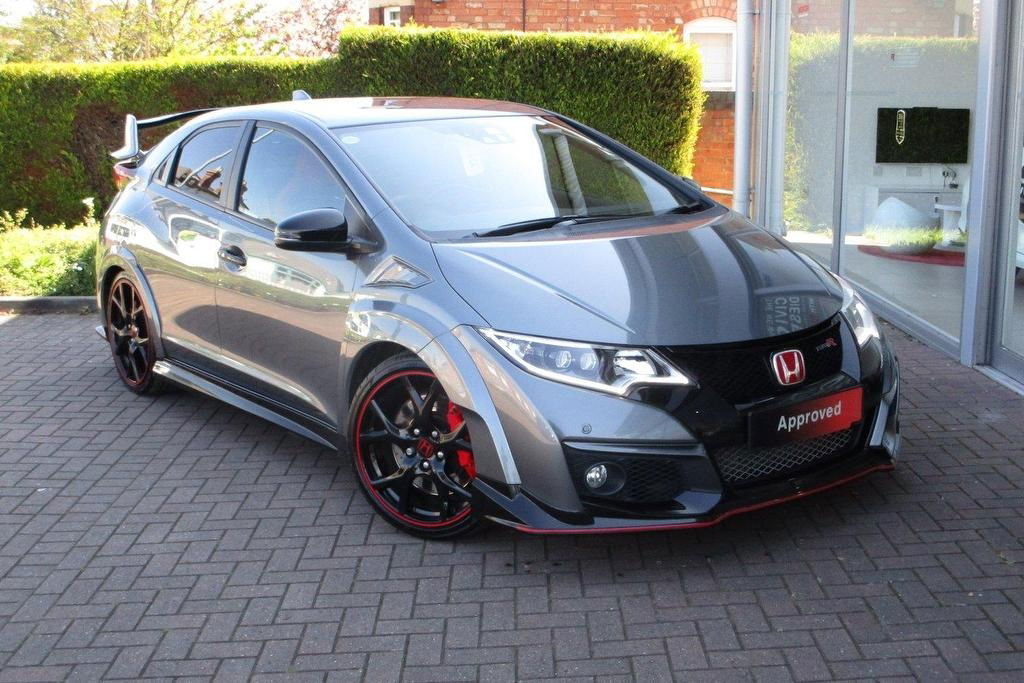

Comments
We share the number one, but in second(ALMOST A FIRST (FOR ME)) comes the VIII and in third the X…
I’ll surely miss these Mitsubishi’s!
Kyoichi approves
Tbh I have the opposite opinion. I don’t like the 7-8-9s much at all, but I looooooove the oldest Evos. Something about their simpler designs hold a lot of appeal with me. Especially the 3.
If I seriously had to pick a favourite it would be the Evo X
i prefer evo4
I prefer the VIII and the IX although I really like the VI TME
My favourite is the Evo III
My favourite Evo is the 7,4,5, and the 6.
Where’s the EVO IX “Coupe”!? Btw, I’ll take 1. Evo X (cuz I loved it in Forza) 2. Evo IX (especially Zomaya’s dark blue widebody one) 3. Evo V
Mine is the vi TME followed by the 3 or the 7
Pagination